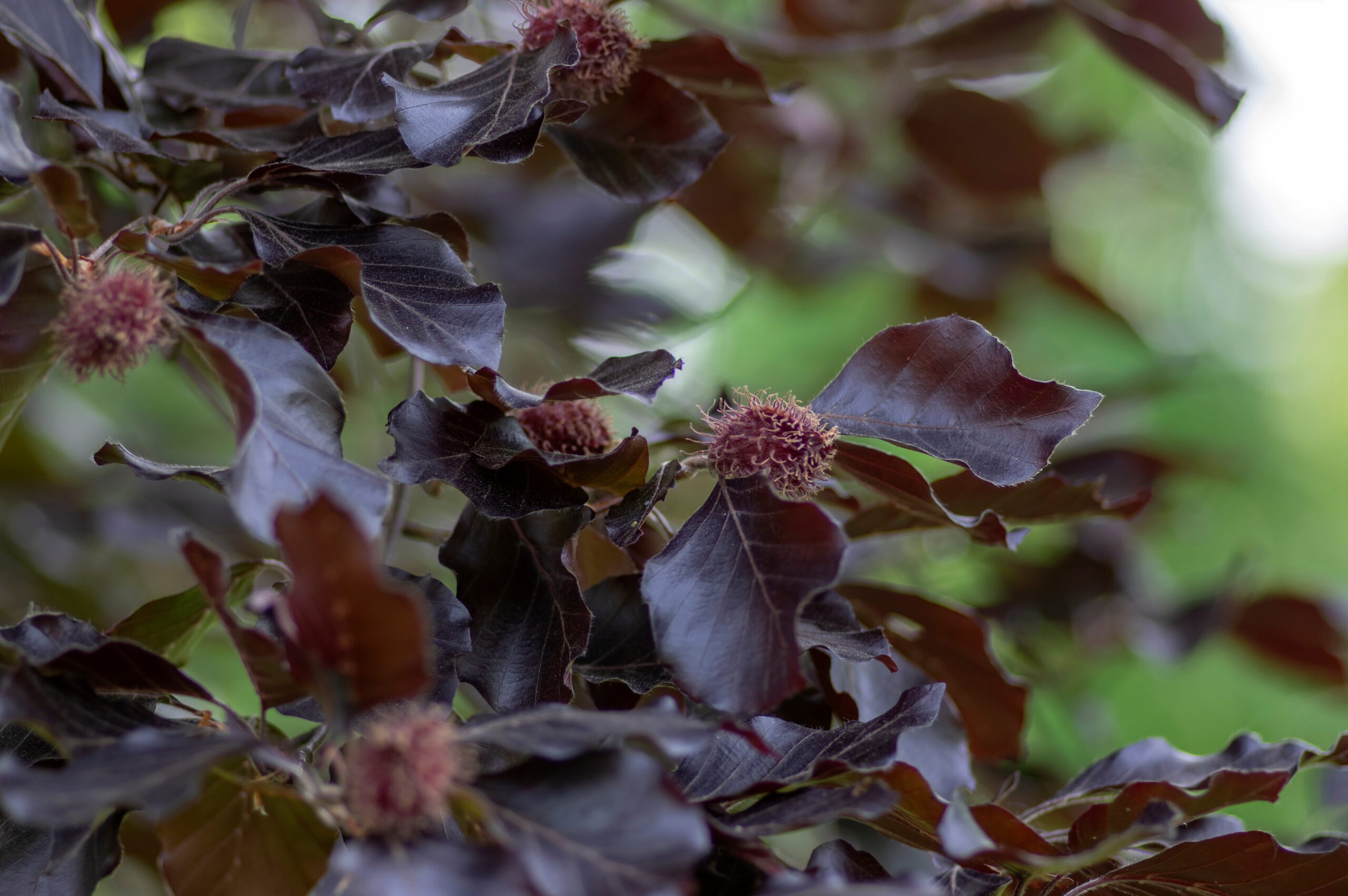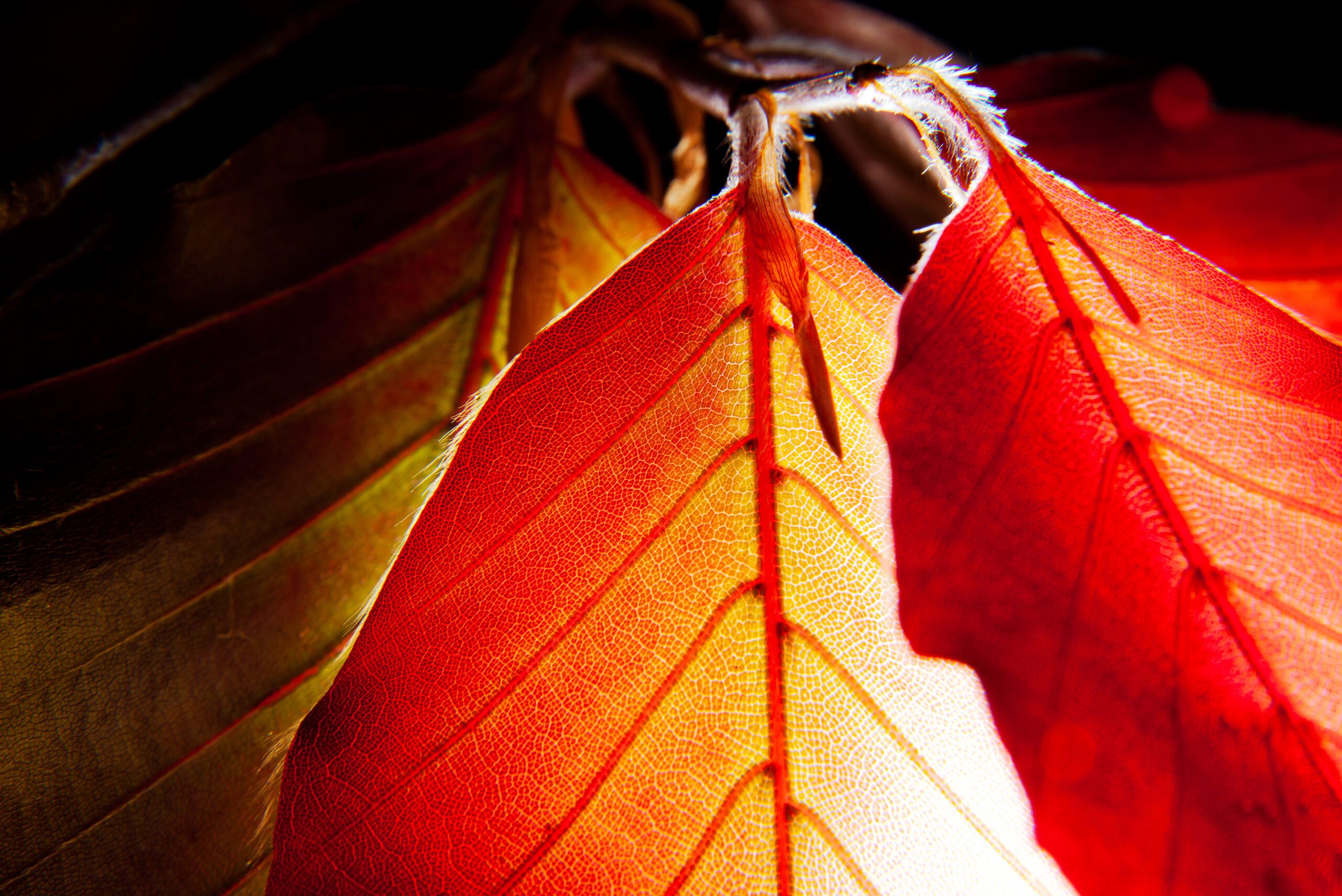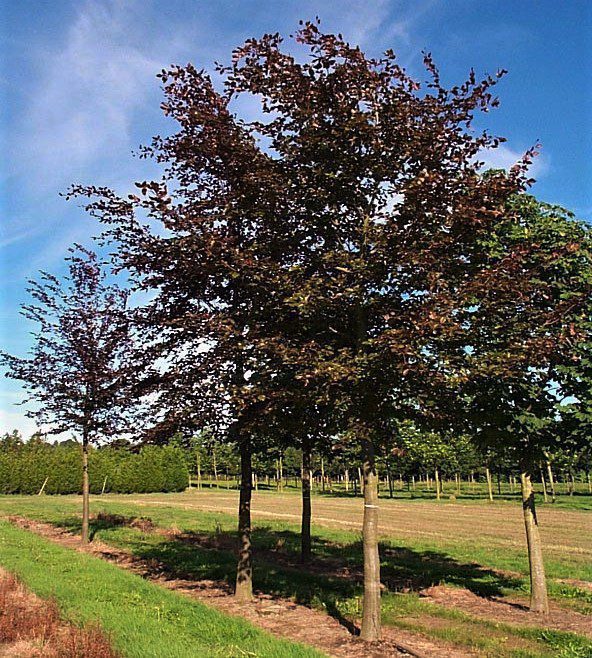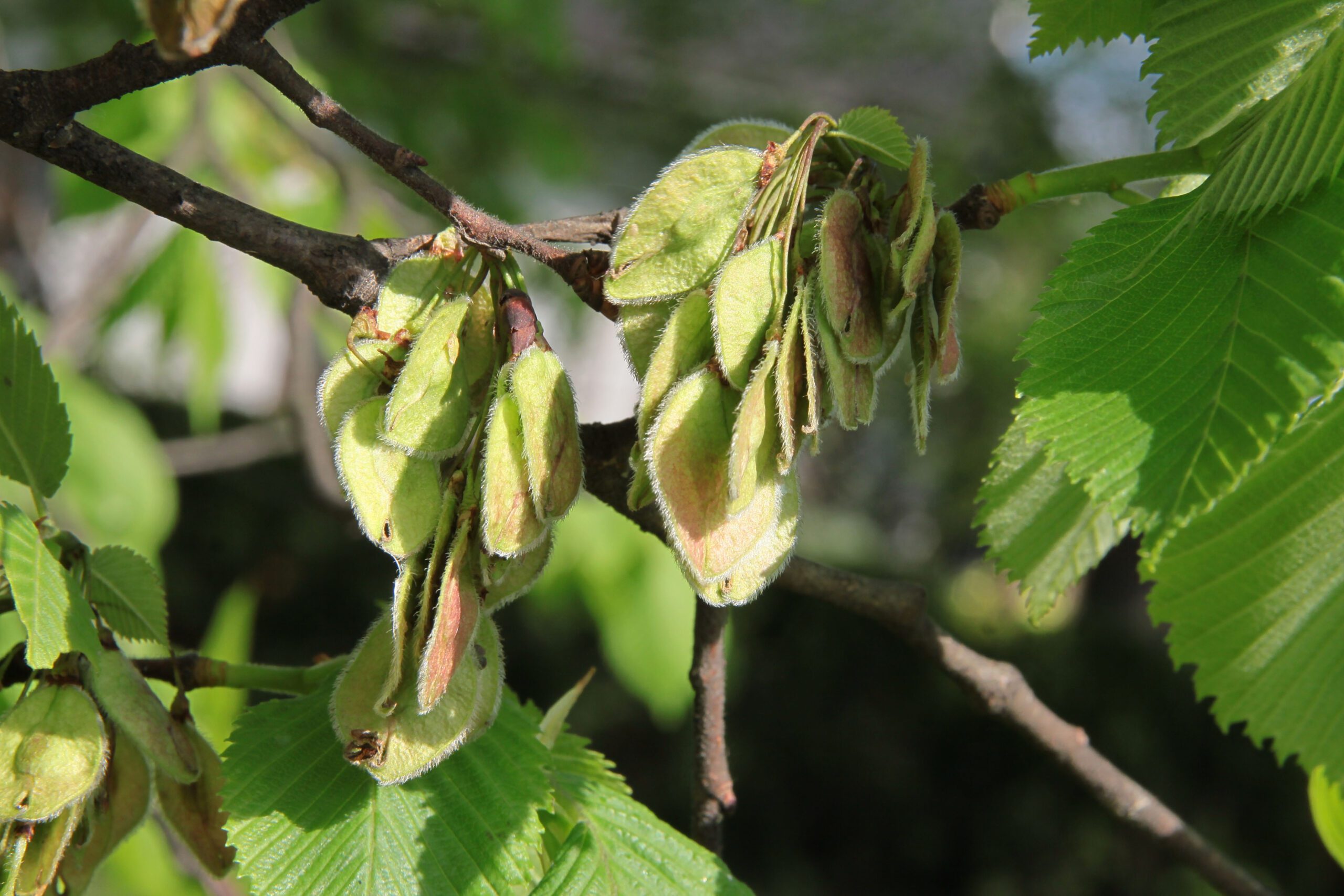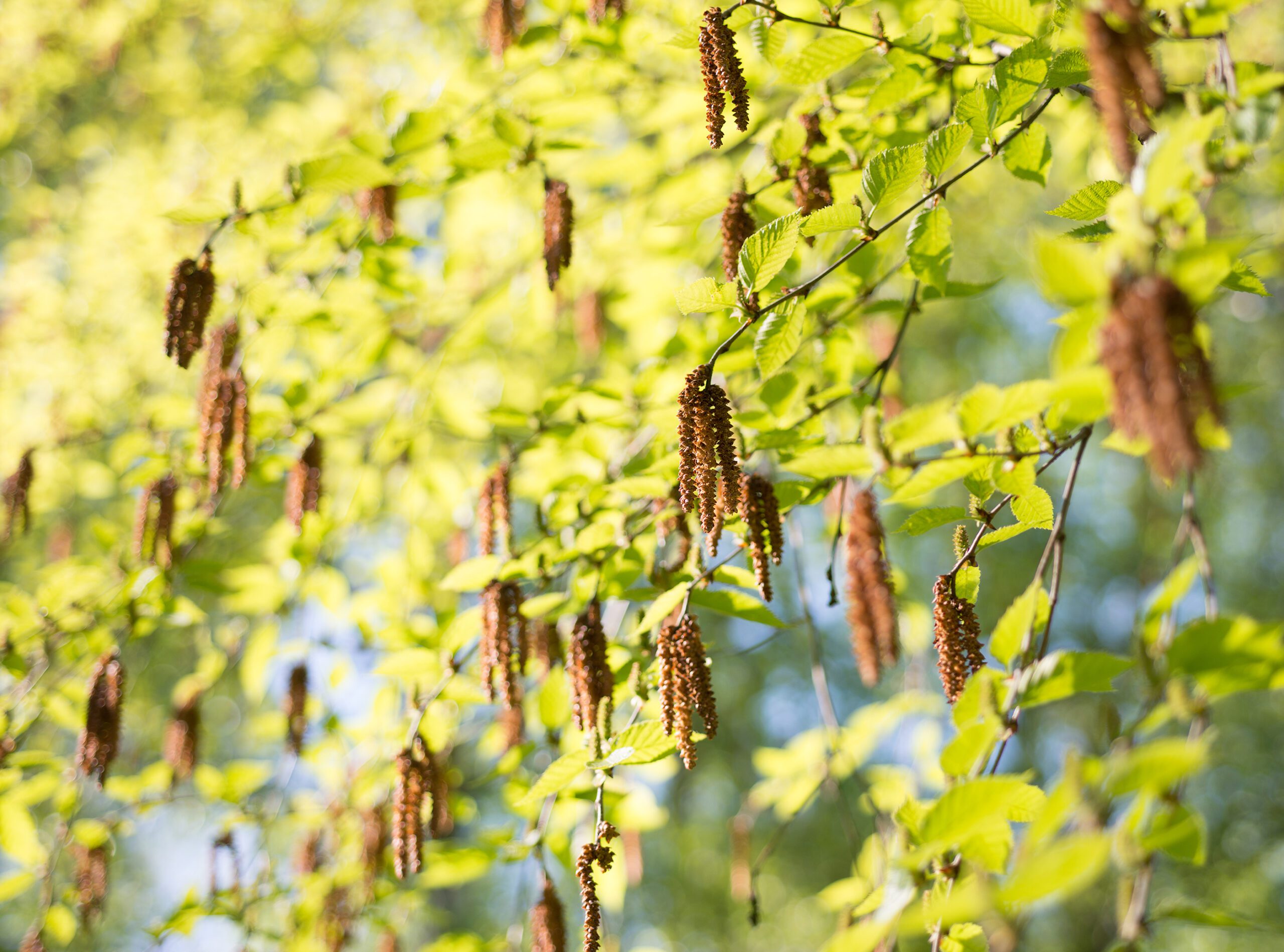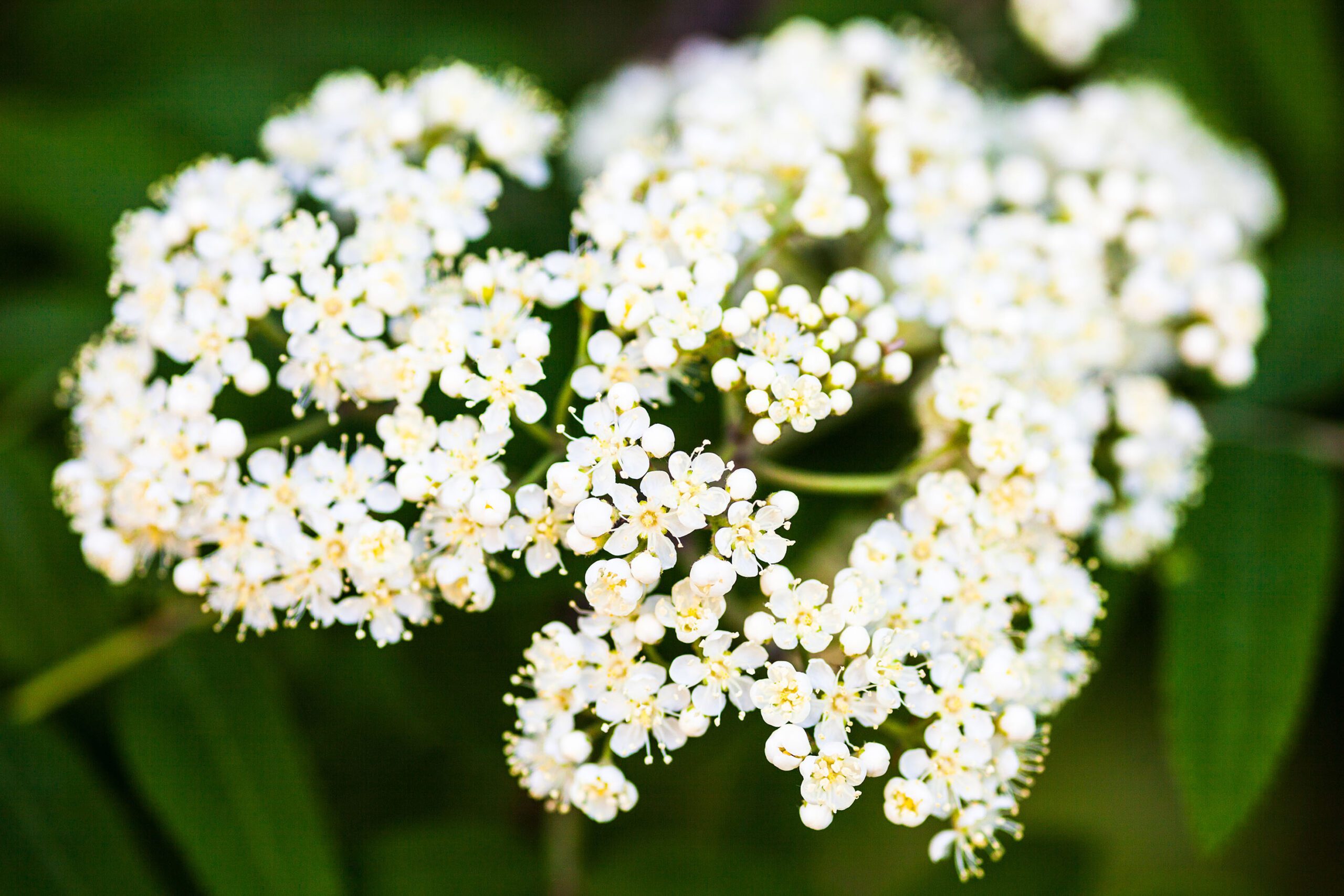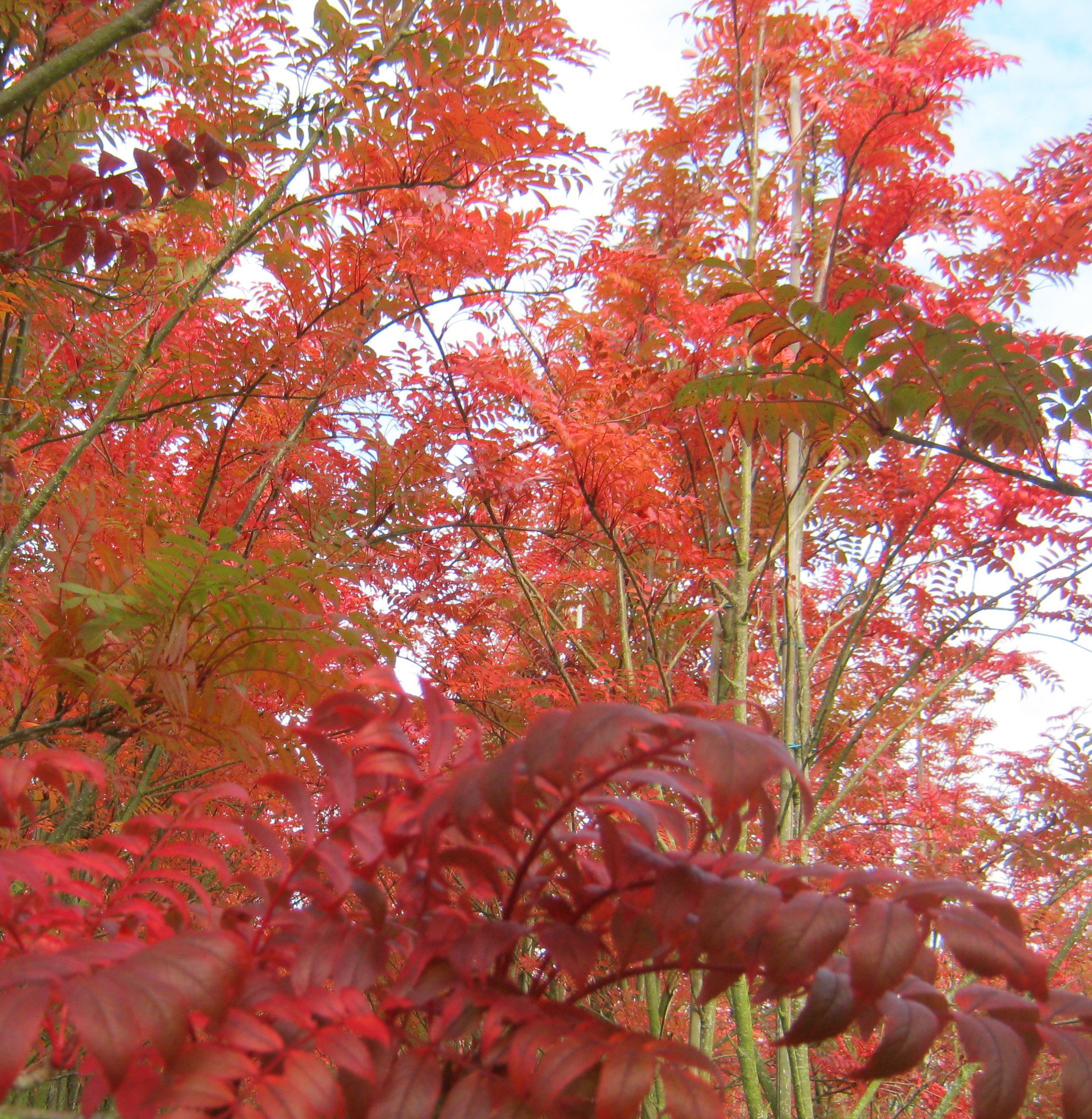Tree Information
Specialities
Tolerances
Wet Soil: Low
Dry Soil: Medium
Lime: Medium
The mighty beech, native to Southern England, sands as one of the most imperial of our trees. Exhibiting a regal stature, it can ascend to towering heights of 35m, displaying an expansive canopy that casts a broad shadow.
Distinct from the popular copper beech which is a seedling variety, this purple variant emerges with distinctive deep plum coloured leaves in spring. The hue of its foliage during summer is dependant on the sunlight it receives.
Green leaves are rich in chlorophyll, absorbing red and purple wavelengths while reflecting green. They therefore present a green appearance to the human eye. The purple beech boasts heightened levels of anthocyanin, a compound that absorbs green light and reflects red and purple hues. This is why its leaves have their characteristic purple tint. When this tree finds itself in shaded environments with limited sunlight, it augments chlorophyll production to capture more red and purple light, resulting in a vibrant green similar to the common beech. In sunnier locations, its foliage adopts a rich plum hue. As autumn approaches, these leaves transition to shades of burnt brown and golden yellow, eventually curling and crinkling as they prepare for winter. Throughout the colder months, the dried leaves persist on the branches, offering a unique screen. Their dense arrangement minimises the penetration of light and rain to the ground below.
When planting alone, the beech stands as a robust specimen, developing a sprawling crown that will almost touch the ground. It also serves as an excellent choice for avenue planting. In this setting, the beech will grow upright with a well-defined central canopy ensuring it doesn’t encroach upon its neighbouring trees.
Visit our Useful Resources for in-depth guides
Discover guides to help you with specifying your trees, caring for your trees and understanding the weights and dimensions of trees.
Useful ResourcesSize
Large
10m high x 6m wide after 25 years
Environment
Ideal as a solitary feature tree, or large avenue planting.
Canopy
If planting in parklands, the canopy can be wide and deep, almost touching the ground. When planting in avenues, the canopy can be upright, strong and central.
Foliage
Buds open with dark plum purple leaves., maturing to a brighter lavender green in shaded areas. Leaf colour is dependant on location and sun exposure. Come autumn, leaves bronze and become a golden brown. They hold onto the canopy throughout winter.
Bark
Soft shining bark is a smooth silver grey. This runs through the branches which provides contrast to its stunning purple foliage.
Resilience
Not demanding of soil type, it requires a free draining structure that does not waterlog. During establishment it is important not to let the shallow roots dry, with regular watering required. It succeeds well in Lime alkaline soils and is hardy to winter frosts. Would naturally establish on hillsides, rather than in the wet clay soil at the bottom.
Available As:
Semi-Mature, Super Semi-Mature
Make an Enquiry
Enquire below and speak to one of our expert team. For trades only, for general public enquiries click here.
Find Trees For Your Project
View Our TreesSpeak to a Member of Our Sales Team
Make an Enquiry
